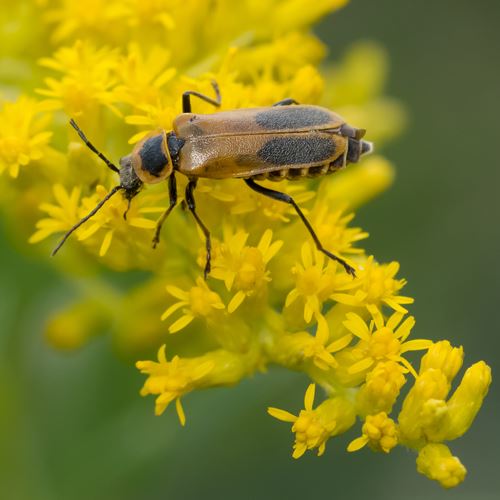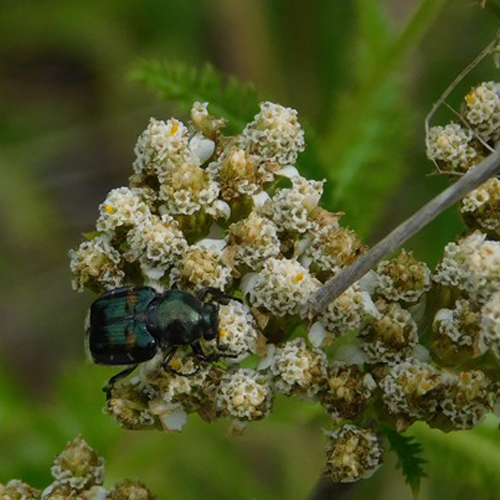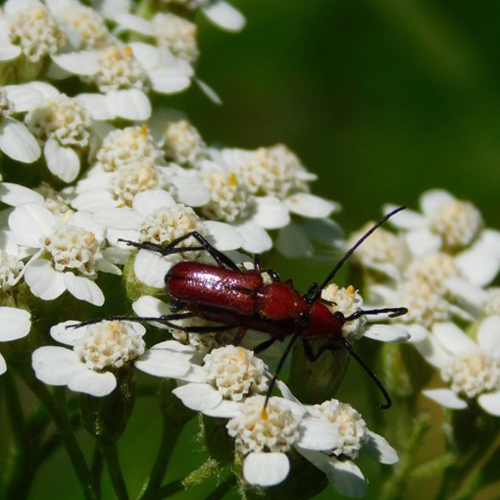Remarkable Pollinators: Part 3

By Ashley Fink and Liz Stahl
Who wins the medal for being the first pollinator- the bee or the beetle? Amazingly, some of the earliest pollinators were beetles – even before bees. Today, many of the world’s flowering plants continue to benefit from the eco-services provided by beetles.
Beetle pollination occurs because these insects are in search of sweet nectar and the protein found in pollen. To obtain this pollen, they walk around on the flower which results in pollen grains clinging to their bodies. The next flower they land on has the potential to be fertilized as the pollen loosens and drops off.


Two interesting species you may see in your yard and in our parks are the emerald flower scarab, Trichiotinus lunulatus [pictured, green beetle] and a species of longhorn beetle, Batyle suturalis [pictured, red beetle]. The emerald flower scarab is a green beetle that has a copper tint and is usually found in meadows or fields near woodlands. The longhorn beetle loves to feed on the pollen of sunflowers, daisies, and black-eyed Susans.
If you want to attract beetles to your yard, here are a few tips. Since beetles are clumsy flyers, they tend to seek flat, wide, or bowl-shaped flowers that are easy to access. They also prefer flowers with strong scents that are either spicy, fruity, or rancid. To find beetles, look for them on their favorite flowers like native roses, yarrow, mints, goldenrods, and water lilies.
Did you know
The goldenrod soldier beetle (Chauliognathus pensylvanicus) [top photo] not only pollinates native plants like goldenrod, but is also considered beneficial because its larvae feed on aphids, small caterpillars, and grasshopper eggs. As a defense mechanism, the adults secrete a chemical compound that makes them unsavory to predators.